Qasim Zeeshan Ahmed
Bluetooth Low Energy Dataset Using In-Phase and Quadrature Samples for Indoor Localization
Dec 02, 2024Abstract:One significant challenge in research is to collect a large amount of data and learn the underlying relationship between the input and the output variables. This paper outlines the process of collecting and validating a dataset designed to determine the angle of arrival (AoA) using Bluetooth low energy (BLE) technology. The data, collected in a laboratory setting, is intended to approximate real-world industrial scenarios. This paper discusses the data collection process, the structure of the dataset, and the methodology adopted for automating sample labeling for supervised learning. The collected samples and the process of generating ground truth (GT) labels were validated using the Texas Instruments (TI) phase difference of arrival (PDoA) implementation on the data, yielding a mean absolute error (MAE) at one of the heights without obstacles of $25.71^\circ$. The distance estimation on BLE was implemented using a Gaussian Process Regression algorithm, yielding an MAE of $0.174$m.
Spectrum Sharing using Deep Reinforcement Learning in Vehicular Networks
Oct 16, 2024



Abstract:As the number of devices getting connected to the vehicular network grows exponentially, addressing the numerous challenges of effectively allocating spectrum in dynamic vehicular environment becomes increasingly difficult. Traditional methods may not suffice to tackle this issue. In vehicular networks safety critical messages are involved and it is important to implement an efficient spectrum allocation paradigm for hassle free communication as well as manage the congestion in the network. To tackle this, a Deep Q Network (DQN) model is proposed as a solution, leveraging its ability to learn optimal strategies over time and make decisions. The paper presents a few results and analyses, demonstrating the efficacy of the DQN model in enhancing spectrum sharing efficiency. Deep Reinforcement Learning methods for sharing spectrum in vehicular networks have shown promising outcomes, demonstrating the system's ability to adjust to dynamic communication environments. Both SARL and MARL models have exhibited successful rates of V2V communication, with the cumulative reward of the RL model reaching its maximum as training progresses.
Optimal Photodetector Size for High-Speed Free-Space Optics Receivers
Sep 16, 2023



Abstract:The selection of an optimal photodetector area is closely linked to the attainment of higher data rates in optical wireless communication receivers. If the photodetector area is too large, the channel capacity degrades due to lower modulation bandwidth of the detector. A smaller photodetector maximizes the bandwidth, but minimizes the captured signal power and the subsequent signal-to-noise ratio. Therein lies an opportunity in this trade-off to maximize the channel rate by choosing the optimal photodetector area. In this study, we have optimized the photodetector area in order to maximize the channel capacity of a free-space optical link for a diverse set of communication scenarios. We believe that the study in this paper in general -- and the closed-form solutions derived in this study in particular -- will be helpful to maximize achievable data rates of a wide gamut of optical wireless communication systems: from long range deep space optical links to short range indoor visible light communication systems.
Novel Fine-Tuned Attribute Weighted Naïve Bayes NLoS Classifier for UWB Positioning
Apr 14, 2023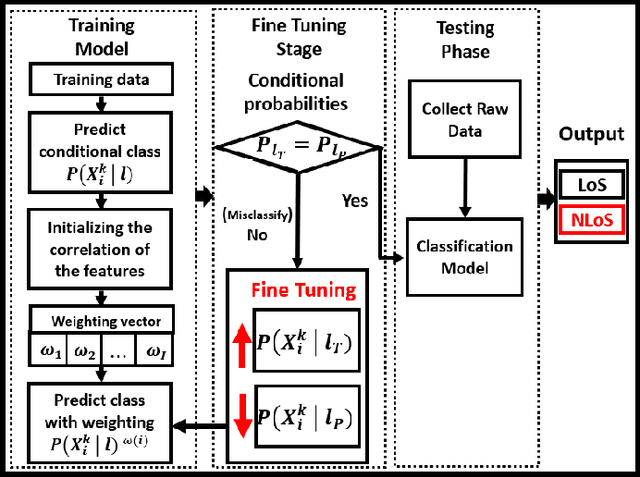
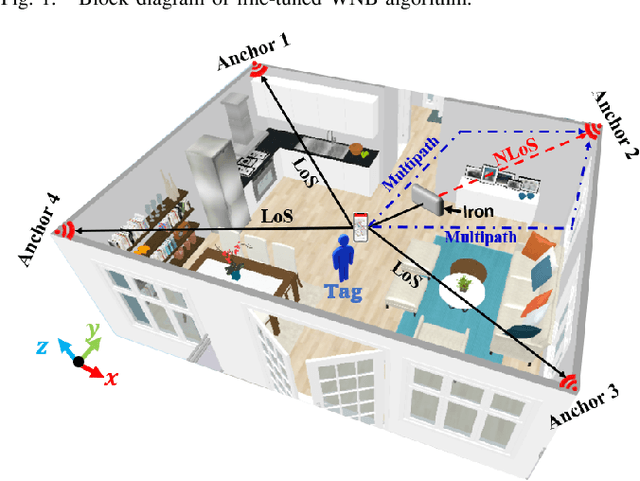
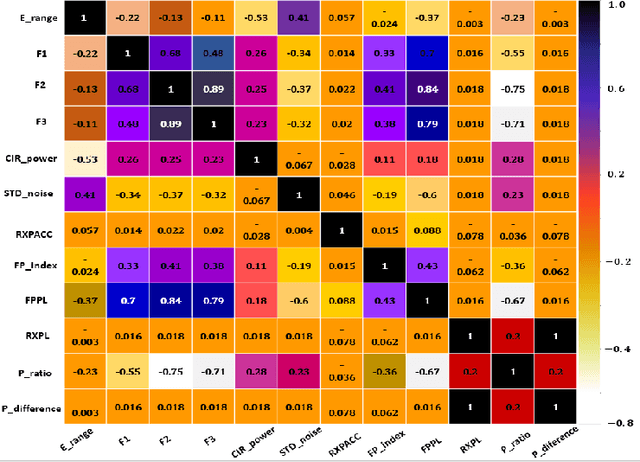
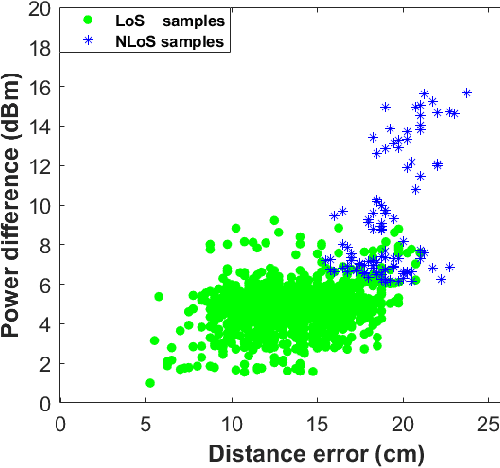
Abstract:In this paper, we propose a novel Fine-Tuned attribute Weighted Na\"ive Bayes (FT-WNB) classifier to identify the Line-of-Sight (LoS) and Non-Line-of-Sight (NLoS) for UltraWide Bandwidth (UWB) signals in an Indoor Positioning System (IPS). The FT-WNB classifier assigns each signal feature a specific weight and fine-tunes its probabilities to address the mismatch between the predicted and actual class. The performance of the FT-WNB classifier is compared with the state-of-the-art Machine Learning (ML) classifiers such as minimum Redundancy Maximum Relevance (mRMR)- $k$-Nearest Neighbour (KNN), Support Vector Machine (SVM), Decision Tree (DT), Na\"ive Bayes (NB), and Neural Network (NN). It is demonstrated that the proposed classifier outperforms other algorithms by achieving a high NLoS classification accuracy of $99.7\%$ with imbalanced data and $99.8\%$ with balanced data. The experimental results indicate that our proposed FT-WNB classifier significantly outperforms the existing state-of-the-art ML methods for LoS and NLoS signals in IPS in the considered scenario.
Feature-Based Generalized Gaussian Distribution Method for NLoS Detection in Ultra-Wideband (UWB) Indoor Positioning System
Apr 14, 2023Abstract:Non-Line-of-Sight (NLoS) propagation condition is a crucial factor affecting the precision of the localization in the Ultra-Wideband (UWB) Indoor Positioning System (IPS). Numerous supervised Machine Learning (ML) approaches have been applied for NLoS identification to improve the accuracy of the IPS. However, it is difficult for existing ML approaches to maintain a high classification accuracy when the database contains a small number of NLoS signals and a large number of Line-of-Sight (LoS) signals. The inaccurate localization of the target node caused by this small number of NLoS signals can still be problematic. To solve this issue, we propose feature-based Gaussian Distribution (GD) and Generalized Gaussian Distribution (GGD) NLoS detection algorithms. By employing our detection algorithm for the imbalanced dataset, a classification accuracy of $96.7\%$ and $98.0\%$ can be achieved. We also compared the proposed algorithm with the existing cutting-edge such as Support-Vector-Machine (SVM), Decision Tree (DT), Naive Bayes (NB), and Neural Network (NN), which can achieve an accuracy of $92.6\%$, $92.8\%$, $93.2\%$, and $95.5\%$, respectively. The results demonstrate that the GGD algorithm can achieve high classification accuracy with the imbalanced dataset. Finally, the proposed algorithm can also achieve a higher classification accuracy for different ratios of LoS and NLoS signals which proves the robustness and effectiveness of the proposed method.
Anomaly Detection Based on Generalized Gaussian Distribution approach for Ultra-Wideband (UWB) Indoor Positioning System
Aug 09, 2021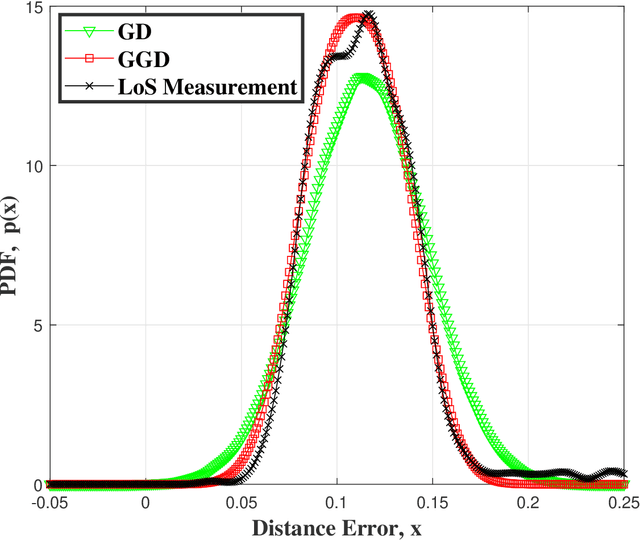
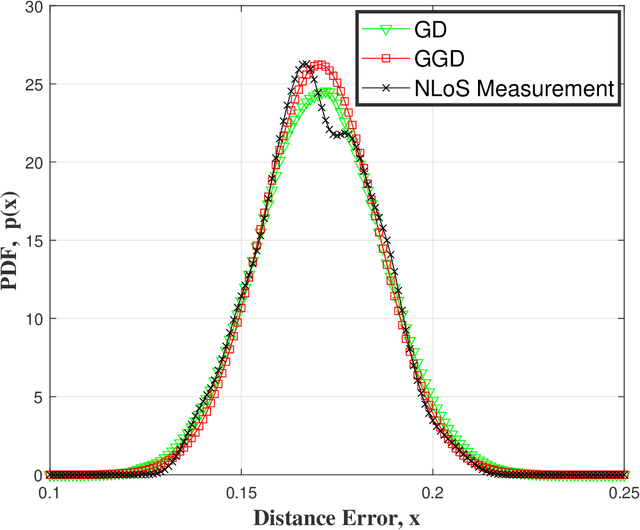
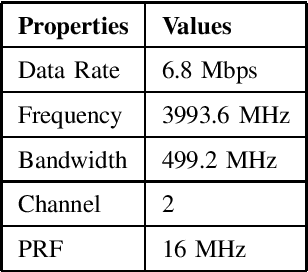
Abstract:With the rapid development of the Internet of Things (IoT), Indoor Positioning System (IPS) has attracted significant interest in academic research. Ultra-Wideband (UWB) is an emerging technology that can be employed for IPS as it offers centimetre-level accuracy. However, the UWB system still faces several technical challenges in practice, one of which is Non-Line-of-Sight (NLoS) signal propagation. Several machine learning approaches have been applied for the NLoS component identification. However, when the data contains a very small amount of NLoS components it becomes very difficult for existing algorithms to classify them. This paper focuses on employing an anomaly detection approach based on Gaussian Distribution (GD) and Generalized Gaussian Distribution (GGD) algorithms to detect and identify the NLoS components. The simulation results indicate that the proposed approach can provide a robust NLoS component identification which improves the NLoS signal classification accuracy which results in significant improvement in the UWB positioning system.
 Add to Chrome
Add to Chrome Add to Firefox
Add to Firefox Add to Edge
Add to Edge